- Accommodations
- Destination
- Family friendly
- Glimpse of Tours
- Meals Included
- Mountain
- Nepal
- Seasonal Offer
- Transportation included
- Walking
Pokhara is a remarkable place of natural beauty. Situated at an altitude of 827m from the sea level and 200km west of Kathmandu (Capital of Nepal) valley, the city is known as a center of adventure. This enchanting city has several beautiful lakes and offers stunning panoramic views of Himalayan peaks. The serenity of lakes and the magnificence of the Himalayas rising behind them create an ambience of peace and magic. So today the city has not only become the starting point for most popular trekking and rafting destinations but also a place to relax and enjoy the beauty of nature.
Pokhara is part of a once vibrant trade route extending between India and Tibet. To this day, mule trains can be seen camped on the outskirts of the town, bringing goods to trade from remote regions of the Himalaya. This is the land of Gurungs and Magars, hardworking farmers and valorous warriors who have earned worldwide fame as Gurkha soldiers. The Brahmans, Chhetries, Newars, Thakalis are another important ethnic group here, are known for their entrepreneurship.
Fewa Lake, Begnas Lake and Rupa Lake, Barahi Temple, World Peace Pagoda, Seti, Gandaki, Devi’s Fall, Gupteswar Gupha (cave), Mahendra Gupha(cave), Chamero Gupha (Bats Cave), The Old Bazaar, Bindabasini Temple, Matepani Gumbha (Buddhist Monastery) Bhadrakali Mandir, Regional Museum, International Mountain Museum, Gorkha Memorial Museum, Annapurna Museum, Himalayan View Nightlife and Entertainment Around Pokhara.
Fewa Tal (Lake): Fewa Lake, the second largest lake in the kingdom, roughly measuring 1.5 km by 4 km, is the center of all attractions in Pokhara. The enchanting lake is an idyllic playground. Brightly painted wooden boats and sailboats can be rented on reasonable cost around lakeside. The lake is neither deep (roughly 47 meters at most), the water is warm and swimming is pleasant. The eastern shoreline of the lake, popularly known as Lakeside or Baidam, consists of seemingly endless strip of lodges, restaurants, bookshops and souvenir shops. One of the fascinating parts of lakeside is the splendid view of the mountains, especially when the still water reflects the peaks, creating a double image.
Barahi temple: This is the most important religious monument in Pokhara. Built almost in the middle of Fewa Lake, the two storied pagoda representing the female force of Hindu (Shakti). Devotees can be seen, especially on Saturdays, carrying male animals and fowl across the lake to be sacrificed to the deity.
Begnas Lake and Rupa Lake: The lakes are located about 15km from Pokhara at the end of a road that turns north from the highway to Kathmandu. Divided by the forested hillock called Panchabhaiya Danda, the lakes offer the perfect nature retreat because of their relative seclusion. Splendid boating and fishing can be done here.
World Peace Pagoda: The pagoda is a massive Buddhist stupa and is situated on top of a hill on the southern shore of Fewa lake. Besides being an impressive sight in itself, the shrine is a great vantage point which offers spectacular views of the Annapurna range and Pokhara city. You can get there by crossing the lake by boat and then hiking up the hill.
Seti Gandaki (River Gorge): Flowing right through the city, the boisterous river runs completely underground at places. Amazingly, at certain points the river appears hardly two meters wide. But its depth is quite beyond imagination – over 20 meters! Mahendra Pul (bridge) provides a perfect view of the river’s dreadful rush and the deep gorge made by its powerful flow.
Devi’s fall: Locally known as Patale Chhango (Hell’s fall), Devi’s fall (also known as Devin’s or David’s) is an awesome waterfall lying about 2 km south-west of Pokhara airport on the highway to Tansen, Butwal. An interesting modern legend says that a foreigner named David was skinny-dipping in the Pardi Khola (river) when the floodgates of the dam were opened, sweeping him into an underground passage beneath the fall, never to be seen again.
Gupteswar Gupha (Cave): Gupteswar Gupha, a sacred cave, lies 2 km from Pokhara airport on the Siddhartha Highway leading southwest from the city. The entrance is right across from Devi’s Fall and the cave is almost 3 km long. It has some big hall-size rooms and some passages where you have to crawl on all fours. This cave holds special value for Hindus since a phallic symbol of Lord Shiva is preserved here in the condition it was discovered. An entrance fee of NRs. 50.00 is charged and taking pictures inside the cave is prohibited.
Mahendra Gupha (cave) and Chamero Gupha: Mahendra Gupha is the large limestone cave. Shepherd boys are said to have discovered it around 1950. A two hour walk to the north of Pokhara, it is best to bring your own torch to see the stalactites and stalagmites, although most of them have been carted out by souvenir hunters. Chamero Gupha locally called Chamero Odhaar (“House of Bats”) located near by Mahendra Gufa.
The Old Bazaar (Ganesh Tole and Ram Krishna Tole): Pokhara’s traditional bazaar is colorful and so are its ethnically diverse traders. In its temples and monuments can be seen ties to the Newar architecture of the Kathmandu Valley. Located about 4 km from Lakeside, the market’s original charm is alive and well.
Bindbyabasini Temple: Bindhyabasini temple is the centre of religious activity in the old bazaar. It is dedicated to goddess Bindbyabasini, yet another manifestation of shakti (Power) of Hindu.
Matepani Gumba (Buddhist Monastery): There is a splendid Buddhist Monastery on the top of the small forested hill above Matepani east of Mahendra pul. It overlooks a large section of the Pokhara city and once there on find oneself lost in time amid the chanting Ramas, there colossal guardian images of the Buddha accompanying two other gurus and a prayer house with exquisitely carved columns and friezes.
Bhadrakali Temple: To the south of the Buddhist Monastery there is another small but very beautiful hill and in this pleasant sylvan setting lies Bhadrakali temple which also merits a visit.
Museums: Pokhara Regional Museum, located in Nayabazar, reflects the ethnic mosaic of western Nepal. The lifestyles and history of ethnic groups such as the Gurung, Thakali and the Tharu are attractively displayed. Open daily, except Tuesdays and holidays, from 10 am to 4 pm. Entrance fee is Rs. 5 and there is an extra Rs. 10 for cameras (Tel: 061-520413).
Annapurna Museum: Also known as the Natural History Museum, is located at Prithvi Narayan Campus east of the old bazaar named Bagar. Managed by the Annapurna Conservation Area Project (ACAP), the museum has an exceptional collection of butterflies, insects, birds, and models of wildlife as well as samples of various precious and semi-precious stones and volcanic rocks. Open daily, except Saturdays and holidays, from 9 am to 4 pm. Entrance is free.
International Mountain Museum: The theme of this museum is to cover the information and exhibits related with the Man, Mountain and Mountain activities around the world. Open daily (365 days in a year) from 9 am to 4:30 pm. Entrance: Foreigner : Nrs: 300.00, SAARC Citizen Nrs: 100.00, Nepalese Nrs: 50.00, Student(Nepalese) Nrs: 25.00
Gorkha Memorial Museum: In 1815 Nepalese soldiers clashed with the British troops in the northern border of India. After a fierce battle they showed respect to those “… Brave Goorkhas…” by erecting a stone with engravings. Soon they become close friends and the Gurkha regiments were formed. To this day, Gurkha solders still serve in the British Army. Entrance fee is Nepalese Nrs. 20.00, SAARC Citizen Nrs.80.00 and Foreigner Nrs. 150.00
Himalayan View:
The magnificent Annapurna panorama that’s visible on the northern skyline of Pokhara is quite incredible. The main peaks are Annapurna I to IV and the beautiful Machhapuchhare (or Fishtail Mountain, so named after its twin peaks). Besides these, you can also see the Manaslu range, Dhaulagiri range and other peaks.
The mountains will probably be hidden in the clouds between April and September. A nice evening on the banks of Fewa Lake with the mountain range as the backdrop is what Pokhara is really about!
Nightlife and Entertainment: There is not much of nightlife in Pokhara other than dining. The town shuts down by about 10:30 in the evening. Until you can hang out some of the bars and pubs that are becoming trendy in the area.
Around Pokhara:
Pokhara is the starting and ending point for many of the popular trekking routes in Nepal. Longer treks (one to three week long) such as the Jomsom trek, Annapurna Circuit, and Annapurna Sanctuary begin here. If Kathmandu is the cultural hub of Nepal, Pokhara is its center of adventure. An enchanting city nestled in a tranquil valley; it is the starting point for many of Nepal’s most popular trekking and rafting destinations. The atmosphere on the Shore of Fewa Lake is one of excited vitality as hipster backpackers crowd the many bars and restaurants exchanging recommendations on guest houses and viewpoints, both by the lake and above the clouds.
Pokhara is a place of remarkable natural beauty. The serenity of Fewa Lake and the magnificence of the fish-tailed summit of Machhapuchhre (6,993m) rising behind it create an ambience of peace and magic. At an elevation lower than Kathmandu, it has a much more tropical feel to it, a fact well appreciated by the beautiful diversity of flowers which prosper in its environs. Indeed, the valley surrounding Pokhara is home to thick forests, gushing rivers, emerald lakes, and of course, the world famous views of the Himalaya.
Pokhara is part of a once vibrant trade route extending between India and Tibet. To this day, mule trains can be seen camped on the outskirts of the town, bringing goods to trade from remote regions of the Himalaya. This is the land of the many ethnic groups, hardworking farmers and valorous warriors who have earned worldwide fame as Gurkha soldiers. The Thakalis, another important ethnic group here, are known for their entrepreneurship.
Take a look at tours for more packages.
| DEPARTURE/RETURN LOCATION | Kathmandu, Nepal | |||||
| DEPARTURE TIME | Please arrive by 6:15 AM for a prompt departure at 6:30 AM. | |||||
| RETURN TIME | Approximately 6:30 PM. | |||||
| THINGS TO BRING |
|
|||||
| INCLUDED |
|
|||||
| NOT INCLUDED |
|
Additional information
| Duration | 3 days |
|---|---|
| Physicality | 6/10 |
| Location | Pokhara, Nepal |
1st day
- Departure for Pokhara
- Breakfast on the way
- Lunch on the way
- Arrive at Pokhara, Check in hotel
- Lake side visit
- Dinner/Overnight
2nd day
- Wake up
- Barahi temple visit
- Breakfast
- City tour (Bindabasini temple, Mahendra cave, Chamero Gufa)
- Lunch
- Sightseeing of Devi’s Fall, Gupteshwor Gufa, Peace Pagoda, Mountaineering Museum
- Dinner/Overnight
3rd day
- Wake up & Pack up
- Breakfast
- Departure for Kathmandu
- Lunch at Bimalnagar
- Marsyangdi Hydropower visit
- Arrival at Kathmandu
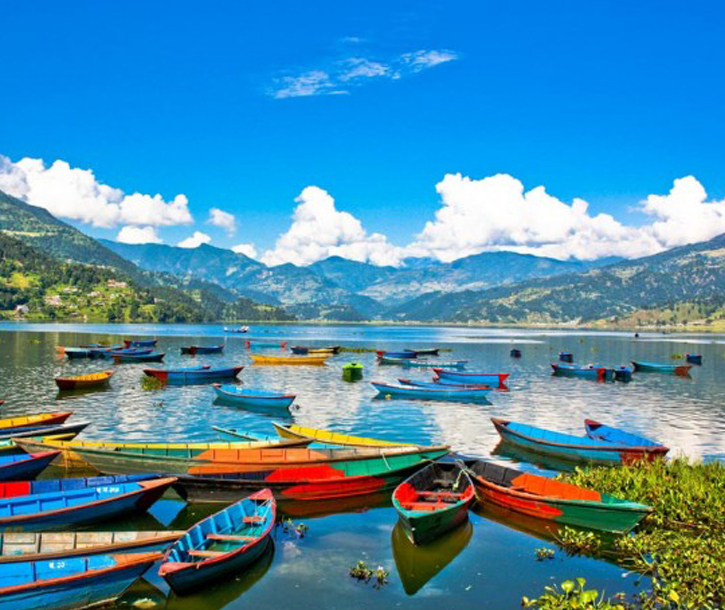
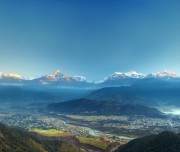
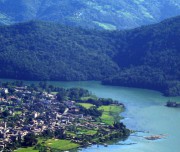
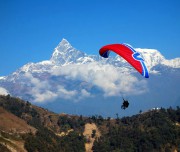
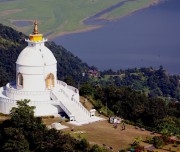

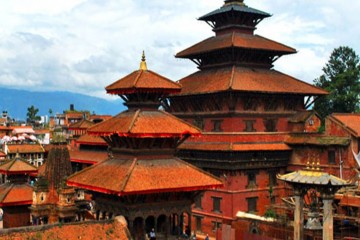

Tour Reviews
There are no reviews yet.
Leave a Review